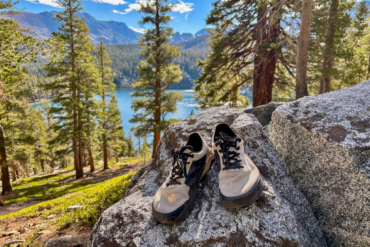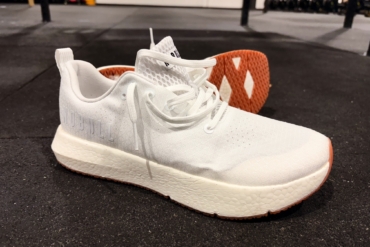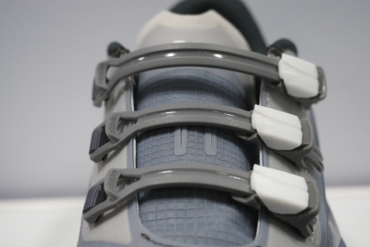
Kelly Agnew is one of the most prolific ultra runners we know. Here he shares his experience with two iterations of the Altra Loan Peak trail-running shoe — the Loan Peak 1.5 (now discontinued) and Loan Peak 2.0 ($120).

I hate new running shoes. I’m the type of trail runner that will wear a pair of shoes until they literally fall from my feet mid-run, happily depleted after a long and satisfying life on the mountain trails. With the Wasatch Front 100 looming around the corner, I couldn’t afford the risk of having my shoes fall from my feet in the middle of the race, so begrudgingly it was time to find something new.
Out of curiosity, I decided to try the Altra Lone Peak 2.0. While walking away with my new shoes, I was offered a pair of the Lone Peak 1.5s, which has now been discontinued. I gladly accepted them and decided to do a side by side comparison to determine which shoe would accompany me on my 100-mile trail adventure through the Wasatch Mountains.
Upon initial inspection, it was obvious the newer version of the Lone Peak represented a major deviation from its predecessor. The weight, cut, styling and virtually all the construction materials were different. That initial impression was confirmed by the fit and feel once I had the shoes on my feet. I was eager to get them on the trail for the ultimate test.

I started off by wearing the Lone Peak 1.5s for the first run. I enjoy a low profile shoe for training, as well as most of my racing, and this shoe seemed to be a good choice right from the start.
I ran a 6 mile mountain trail loop that provided me with a wide variety of terrain and trail conditions to test the shoes on. They were light enough to make me feel quick and nimble while providing the protection my feet need while running across the sharp rock on technical trails in the Wasatch. I enjoyed everything about the shoe and my only complaint is the ridiculously long laces that they provide with the shoe when new.

The following day, I slipped on the Lone Peak 2.0s and followed the same route. The stark contrast between these two versions became increasingly obvious with every stride down the trail.
The 2.0 was obviously heavier, I assumed partially due to the more substantial construction of the upper and also due to the added cushion and stack height in the sole.
The ride was heavily influenced by the additional padding and the softer midsole. For me, the shoe didn’t feel as fast but it did feel more comfortable. The added comfort was also aided by the additional cushion around the ankle cuff, which felt like it was gently wrapping itself around my ankle, sealing it off from intrusions from the trail.

I repeated this comparison again over the next two days, just to verify my original findings. I came to the same conclusion on my second round of tests, and while I enjoyed running in both pairs, it was obvious that the Lone Peak 2.0 would be the right choice for running the Wasatch Front 100.
The choice proved to be a good one, and the Lone Peak 2.0 took me to the finish of the Wasatch Front 100, leaving me with the same ugly (but blister-free!) feet that I started with.
I’m still running in the Lone Peak 1.5s, and they’ve become my daily training shoe for the time being. I really enjoy that shoe and will be sad to see the day that I can no longer get my hands on another pair.
While the technical specifications of the shoes illustrate some differences in these versions, they don’t really indicate the wild deviations between the two:
The Altra Lone Peak 2.0 is available online and in stores, and they sell for about $120. The Lone Peak 1.5 is no longer in production but can still be found in the market place on occasion for around $80. If you’re a fan of the 1.5s, or you think you might want to own a pair, you should act quickly before they’re impossible to find.
Because the shoes look, feel and ride so differently, I wish Altra had maintained the Lone Peak 1.5 as part of its lineup, while adding a couple of modest upgrades in the latest version. This would have allowed the company to roll out the Lone Peak 2.0 as an entirely different shoe, giving yet another valuable option to customers. For now, both versions will have a place in my current rotation.
I’m curious to see how the Lone Peak will continue to evolve as Altra tries to refine this product. But for now, the Lone Peak 2.0 has earned a spot in my lineup as a dependable and comfortable shoe for my 100 mile mountain races. Any shoe that can perform that well at the Wasatch Front 100 has nothing else to prove to me.
—Kelly Agnew is a contributor. See his blog, Slipping Slowly Into Pain.





